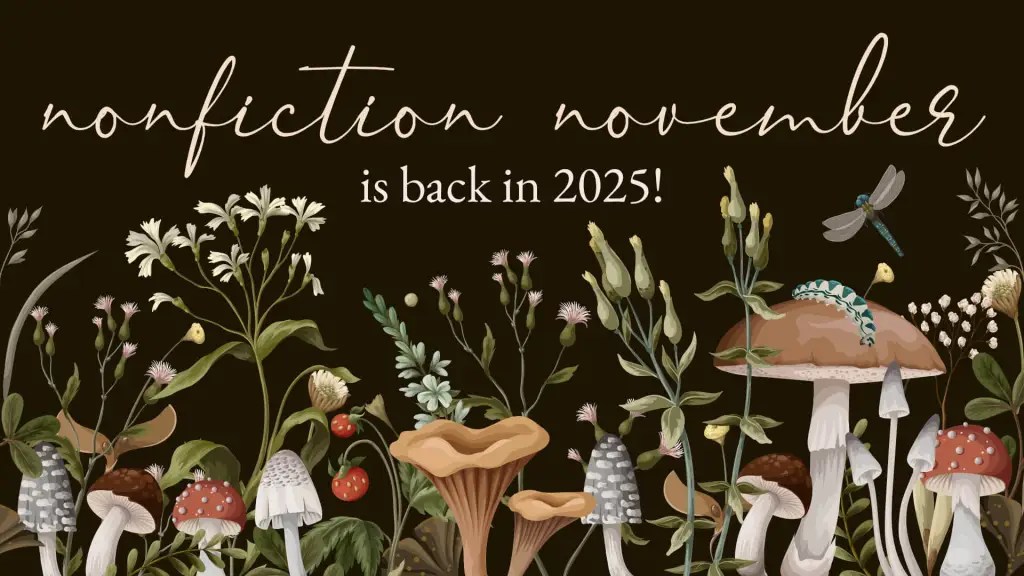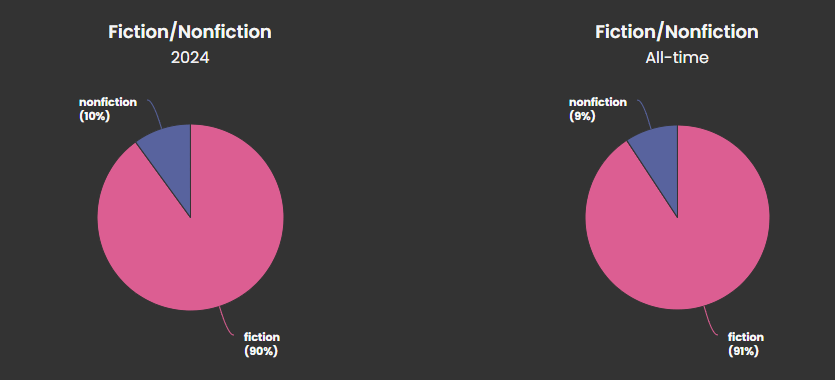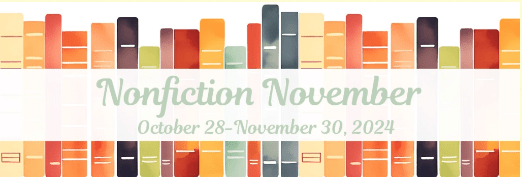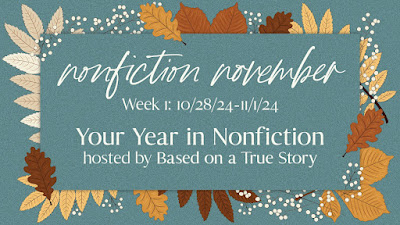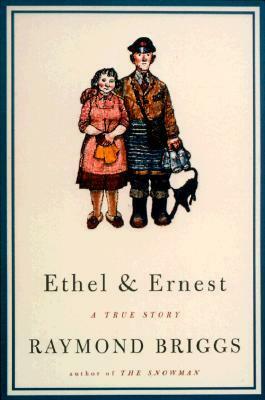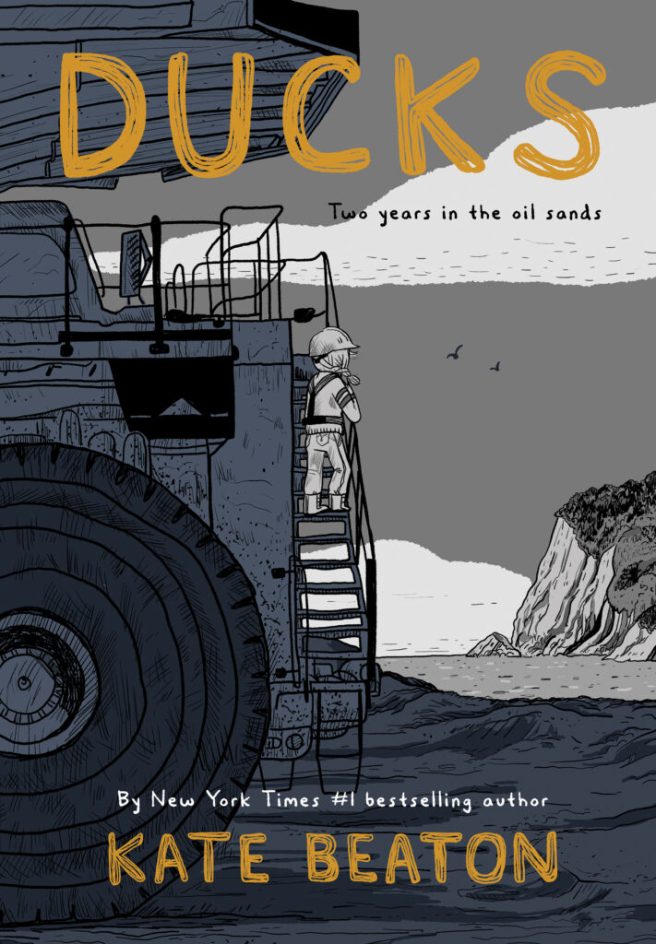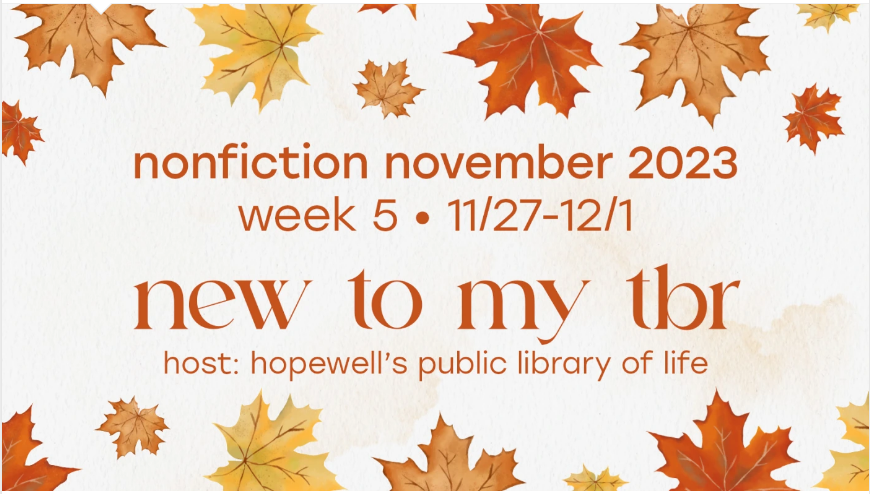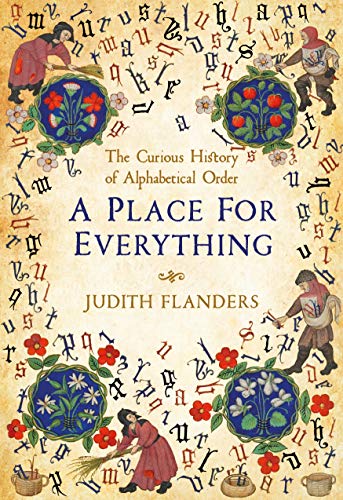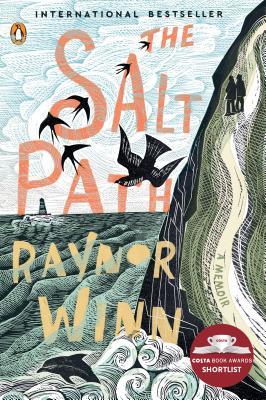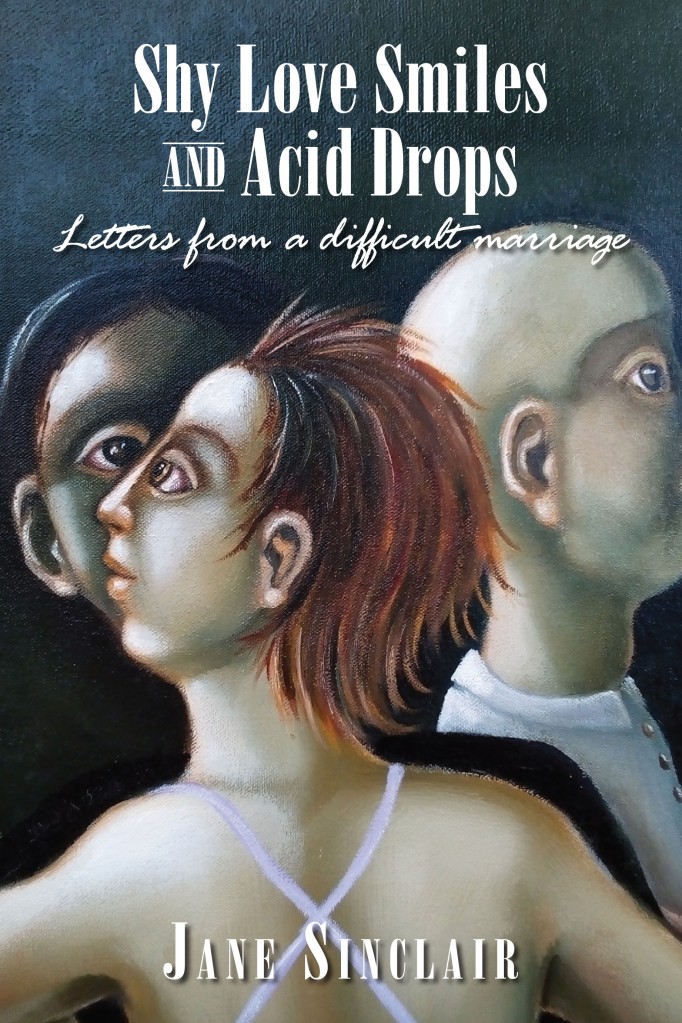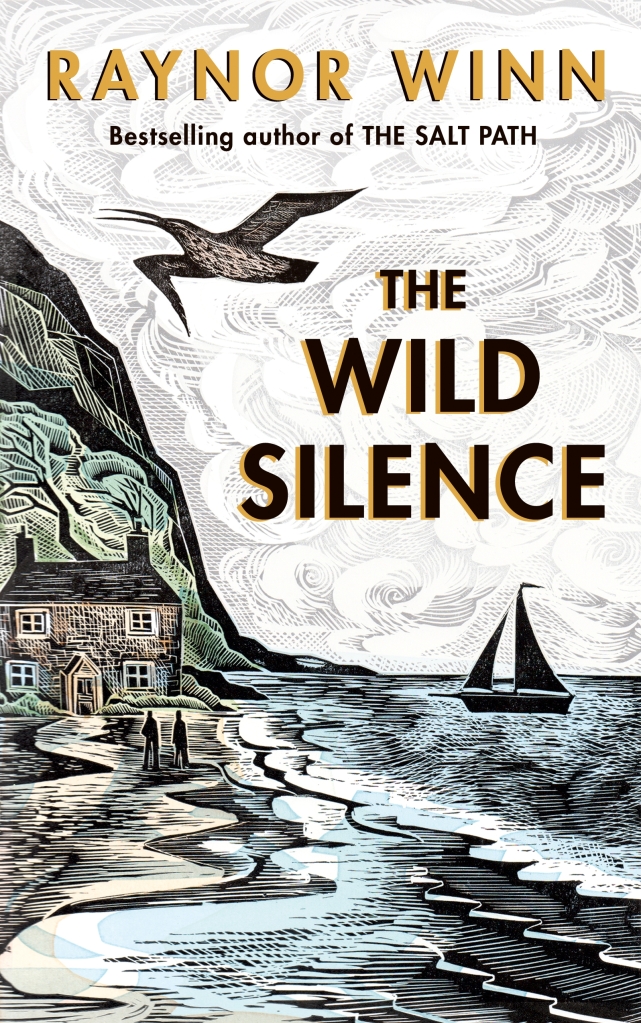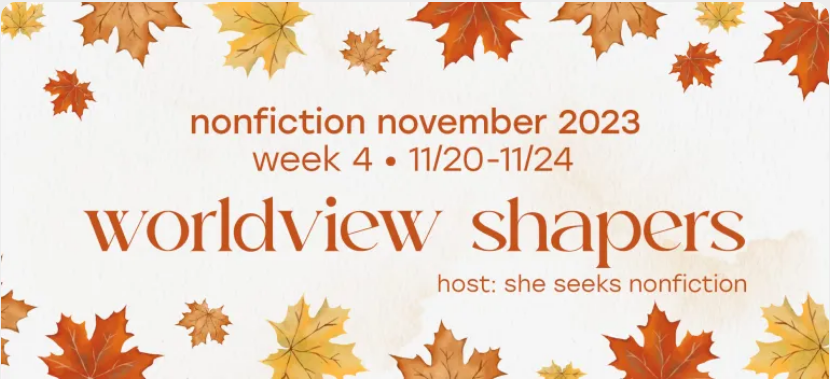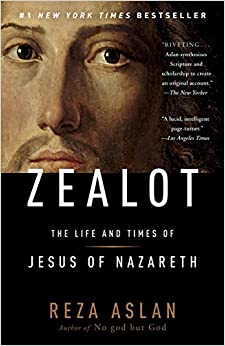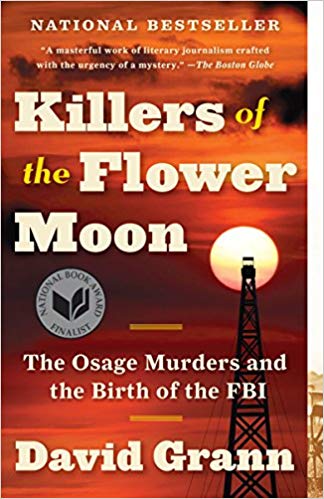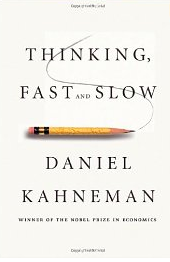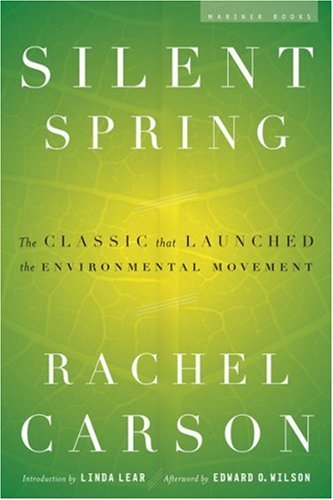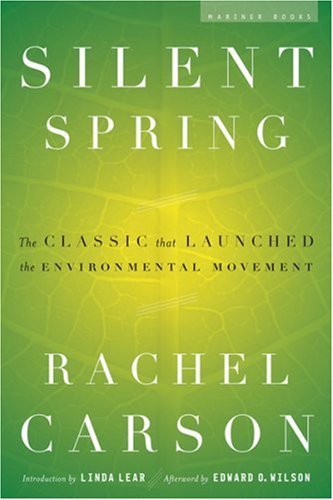Hi, all, it’s November, so it’s time for Nonfiction November, which I participated in the last two years. This year, it is hosted by the following bloggers:
- Heather at Based on a True Story
- Frances at Volatile Rune
- Liz at Adventures in Reading, Running and Working from Home
- Rebekah at She Seeks Nonfiction
- Deb at Readerbuzz
Each week, the host posts a prompt for discussion and a linkup where you can link your posts. For this first week, the host is Heather at Based on a True Story, and the prompt is Your Year in Nonfiction. For more information about the prompt, see Heather’s blog. And here we go for mine.
What Did I Read?
Since November 2024, I read 16 books. I think this means that I have increased my nonfiction reading in number by one each year that I participated until now, when I went up by four (but I am not sure if I included the two books I read in November 2024 in my count last year—probably not). Last year I didn’t list them all, just totaled them by category, but sixteen isn’t so many, so I may as well, in the order that I read them. If I have reviewed them yet (I am behind posting), there’s a link to the review.
- The Dancing Bear by Frances Faviell
- Levels of the Game by John McPhee
- Elizabeth and Essex: A Tragic History by Lytton Strachey
- Cultish: The Language of Fanaticism by Amanda Montell
- Animal, Vegetable, Miracle: A Year of Food Life by Barbara Kingsolver
- Mad Madge: The Extraordinary Life of Margaret Cavendish, Duchess of Newcastle, the First Woman to Live by Her Pen by Katie Whitaker
- Incidents in the Life of a Slave Girl by Harriet Ann Jacobs
- Girl, Interrupted by Susanna Kaysen
- A Short History of Nearly Everything by Bill Bryson
- Luckier Than Most by David Tomlinson
- Life Among the Qallunaat by Mini Aodla Freeman
- The Art Thief by Michael Finkel
- Pocket Atlas of Remote Islands: Fifty Islands I Have Not Visited and Never Will by Judith Schalansky
- Shakespeare: The Man Who Pays the Rent by Judi Dench
- The Novel Life of Jane Austen: A Graphic Biography by Janine Barchas and Isabel Greenberg
- Fenwomen: A Portrait of Women in an English Village by Mary Chamberlain
As far as categorizing them, here goes:
- Biography/Memoir: 10
- Art and Language: 3
- History: 4
- Sociology: 1
- Sports: 1
- Food: 1
- Science: 1
- True Crime: 1
- Maps: 1
Clearly, some of these fit into more than one category. The hardest to categorize are Animal, Vegetable, Miracle, which I have put under memoir but is as much about the importance of good food, and Shakespeare: The Man Who Pays the Rent, which I have not put under memoir, even though it includes lots of anecdotes, but under art and language, because it’s mostly about interpreting Shakespeare’s plays (which sounds dull, but it is not).
Just as a side note, when I look at my record of nonfiction reading from the past year, I see that I seriously went into it in the spring, reading half a dozen books between February and April, then sort of fell off for the summer, and picked up the pace a bit in the fall.
What Were My Favorites?
If I go by my ratings, my favorites were Life Among the Qallunaat, The Pocket Atlas of Remote Islands, and Shakespeare: The Man Who Pays the Rent. However, hands down, the one that made the most impression on me was Pocket Atlas of Remote Islands. I’m sorry, therefore, that I haven’t reviewed it yet. (It’s going to be a Best of Ten, which I tend to save up so as not to have too many in a given period, so I may not get to my review this year, because there are a bunch ahead of it.) I believe I read about it during last year’s Nonfiction November. Other books I read about last year were Cultish and Mad Madge (I think).
What Were My Favorite Topics?
Well, obviously and always, I like reading about people and history. I didn’t read anything this year that I wanted to follow up on, although I like to read about indigenous people, so probably will.
What Am I Hoping to Get Out of Nonfiction November?
Since I’m not a big nonfiction reader and don’t tend to read many blogs that focus on it, I hope to add a few more interesting books to my To Read list.

